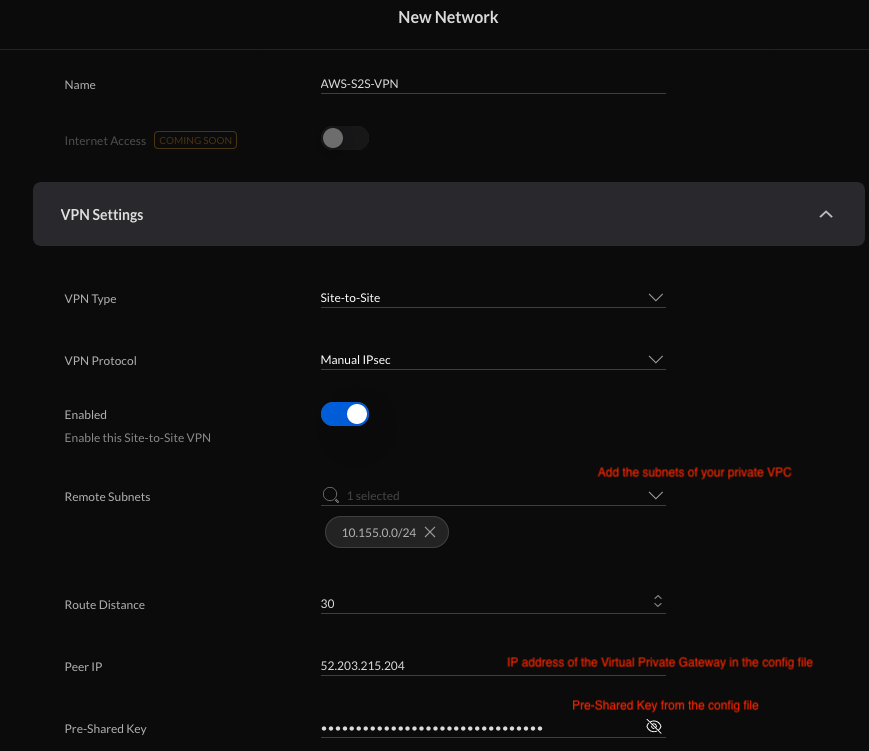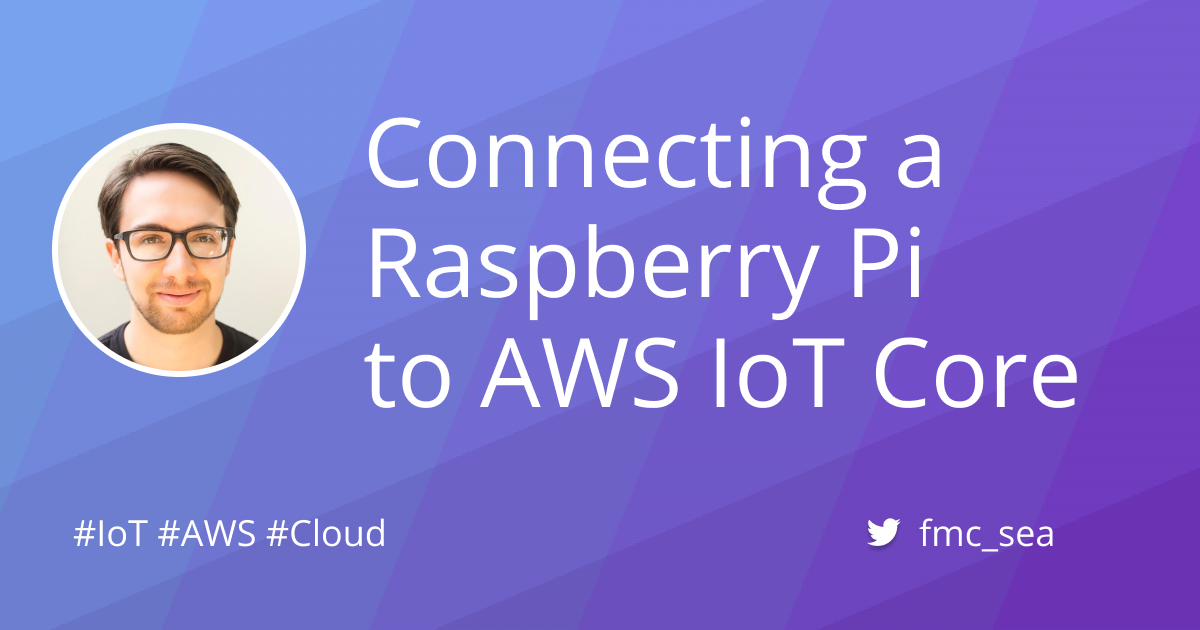Build Your Remote IoT VPC Network: Raspberry Pi & AWS Guide
Are you ready to unlock the full potential of your IoT devices, harnessing the power of the cloud for unparalleled control and security? The integration of Raspberry Pi with AWS via a RemoteIoT VPC Network is not just a technological advancement; its a gateway to innovation, offering endless possibilities for individuals and businesses alike.
The convergence of AWS's vast array of services with the Raspberry Pi's versatility as an IoT device has ushered in a new era of connected devices. From the comfort of your smart home to the complex machinery of an industrial setting, the potential applications are virtually limitless. The aim of this guide is to give you a practical understanding of how to construct a RemoteIoT VPC network, which includes the configuration of your Raspberry Pi, the setup of essential AWS services, and a meticulous focus on data security. Whether you're a seasoned professional, an enthusiastic hobbyist, or an entrepreneur eager to innovate, this guide serves as your detailed roadmap.
Let's first understand what it is. A Virtual Private Cloud (VPC) is a logically isolated section of the Amazon Web Services (AWS) cloud where you can launch AWS resources in a network that you define. In essence, it's your own private network within the broader AWS infrastructure. This allows for enhanced security, control over network configurations, and the ability to customize networking components.
- Telugu Movies Movierulz Updates Latest News Streaming Info
- Vegamovies Your Guide To Free Movies Streaming Options
RemoteIoT, as the name suggests, provides a secure bridge to link your Raspberry Pi to your VPC. This connection facilitates encrypted communication, enables remote access to your devices from any location globally, and allows for centralized control and management of your IoT ecosystem. This secure setup allows users to connect to their raspberry pi devices from any location, utilizing aws's infrastructure.
This isn't just another tech article; it's a deep dive into the practical steps required to establish a secure and effective RemoteIoT environment with Raspberry Pi on AWS. The ability to create a secure and scalable VPC network using a Raspberry Pi opens doors to a world of possibilities, including remote monitoring, efficient data collection, and automated processes. In this comprehensive guide, we'll unravel the steps to set up a RemoteIoT VPC network utilizing Raspberry Pi on AWS. You'll gain the knowledge and tools needed to build your own, tailor-made IoT network.
Imagine a system where your home's climate control is automated, responding to environmental changes in real time, or a factory floor where machinery operates with optimized efficiency, all managed remotely and securely. This is the power of a RemoteIoT VPC network. With the help of this guide, setting up a RemoteIoT VPC network with Raspberry Pi and AWS has become an essential skill. By meticulously following these steps, you can create a secure, efficient, and scalable IoT network tailored to your specific needs.
- Movierulz 2025 Latest South Indian Movies News Must Know
- 2025 Movie Guide Watch Online Reviews More Movierulz Beyond
This article will act as a detailed how-to guide to get you started. We will cover the following topics:
- Setting up your Raspberry Pi for RemoteIoT.
- Configuring a VPC in AWS.
- Establishing secure communication channels.
- Integrating Raspberry Pi into the VPC.
- Implementing security measures.
- Monitoring and managing your IoT network.
This setup involves several key technologies and concepts:
- Raspberry Pi: A low-cost, credit-card sized computer that plugs into a computer monitor or TV and uses a standard keyboard and mouse. It is a capable little device that enables people of all ages to explore computing and to learn how to program in languages like Scratch and Python. It's capable of doing everything you'd expect a desktop computer to do, from browsing the internet and playing high-definition video, to making spreadsheets, word-processing, and playing games.
- AWS (Amazon Web Services): A comprehensive, evolving cloud computing platform provided by Amazon. It offers a wide array of services, including compute power, storage, databases, networking, analytics, and more, designed to help businesses scale and grow.
- VPC (Virtual Private Cloud): A logically isolated section of the AWS cloud, allowing you to launch AWS resources in a network you define.
- SSH (Secure Shell): A cryptographic network protocol for operating network services securely over an unsecured network.
- Security Best Practices: Including encryption, access control, and regular security audits to protect your network and data.
To make things easier, let's consider the hypothetical persona of Alex, an aspiring smart home enthusiast:
| Personal Information | Details |
|---|---|
| Name | Alex Johnson |
| Age | 32 |
| Location | San Francisco, CA |
| Interests | Home Automation, IoT, Cybersecurity |
| Career Information | Details |
| Profession | Software Engineer |
| Company | Tech Innovators Inc. |
| Experience | 8 years in software development, 3 years focused on IoT projects |
| Professional Information | Details |
| Skills | Python, AWS, Linux, Networking, IoT Protocols |
| Project Focus | Building a secure, remote-controlled smart home system. |
| Motivation | To create a fully automated and secure home environment, controlling lighting, climate, security, and more remotely. |
For further information on Home Automation, you can visit this website: Smart Home
First, prepare your Raspberry Pi. This involves installing an operating system (like Raspberry Pi OS) and connecting it to your network. Ensure you have SSH enabled to access the Pi remotely. Youll need a stable internet connection for both your Raspberry Pi and your AWS account. A static IP address for your Raspberry Pi is highly recommended for easier management, although not strictly required. This IP address will allow you to remotely access it from anywhere.
Next, focus on AWS. You'll need an AWS account (if you dont already have one) and create a Virtual Private Cloud (VPC). Within this VPC, you will configure subnets, route tables, and security groups. These components define your network's structure and security rules. Configure your VPC to match your project's requirements.
The next phase involves setting up the core infrastructure. You'll want to create security groups within your VPC to control inbound and outbound traffic. This is crucial for securing your network. Allow only necessary traffic, such as SSH (port 22) for remote access, or specific ports your IoT applications will use. Remember, the goal is to minimize the attack surface by limiting access. We strongly recommend configuring these groups before starting. This includes allowing inbound and outbound rules. Always restrict access to essential ports only and adhere to the principle of least privilege.
After this, you will need to set up an EC2 instance (which simulates a dedicated server) within your VPC. This instance will act as a gateway or a jump host through which you will connect to your Raspberry Pi. Ensure the EC2 instance has a public IP address for initial setup and also configure appropriate security groups.
The next stage involves configuring your Raspberry Pi to connect to the EC2 instance securely using SSH. From there, you will be able to access your Raspberry Pi remotely. Using SSH keys instead of passwords will greatly improve security. Additionally, enable two-factor authentication to enhance security.
Following this, you will have to set up RemoteIoT services and configure the Raspberry Pi to communicate through the RemoteIoT platform. This typically involves installing necessary libraries and configuring connection settings. This provides a seamless, secure connection from your Raspberry Pi to your VPC. Once set up, you can remotely access and manage your Pi from any location with an internet connection. Verify the connection by testing basic commands or applications.
The crucial part of the setup process involves securing your data. You'll want to implement encryption both in transit (using HTTPS or secure protocols) and at rest (encrypting data stored on your Raspberry Pi or within AWS services). Regularly update the Raspberry Pi's software and any installed libraries to patch security vulnerabilities. Additionally, implement strict access control policies to limit who can access your devices and data. Implement and regularly review your security protocols.
Finally, test and monitor your setup to ensure everything functions as intended. Monitor your network traffic, logs, and resource utilization. AWS provides services such as CloudWatch for monitoring and alerting. These tools will help you maintain the security and efficiency of your network.
Setting up a remote IoT VPC network is more than just connecting devices; its about creating a secure, efficient, and scalable environment that meets your project needs. While the initial setup may require technical expertise, the long-term benefits improved security, centralized management, and remote accessibility are well worth the effort. By carefully following these steps and tips, you can create a powerful IoT network.
As technology evolves, the landscape of IoT and cloud computing continues to change. Always stay updated with the latest security protocols and AWS best practices. Regularly update your Raspberry Pi, its software, and security configurations. Continually assess and adapt your security measures as threats evolve. Embrace new AWS features and services that enhance your RemoteIoT setup. By remaining adaptable and proactive, you can maintain a secure and efficient RemoteIoT environment.
RemoteIoT offers an affordable, dependable, and adaptable tiny PC, suitable for smart home devices and machinery. Setting up a RemoteIoT VPC network with Raspberry Pi and AWS is an essential skill, enabling tech enthusiasts, engineers, and professionals to build secure, connected, and efficient systems.
Article Recommendations
- Gymkhana Telugu Movie Updates Latest News Streaming Explore Now
- Where To Watch Alternatives Your Guide To Vega Vegamoviesist



Detail Author:
- Name : Prof. Dino Boyer
- Username : btorphy
- Email : dkeeling@hotmail.com
- Birthdate : 2006-05-22
- Address : 668 Kasandra Drive Apt. 738 West Evelynside, RI 70816
- Phone : +1.410.287.8232
- Company : Predovic, Jaskolski and Schneider
- Job : Diesel Engine Specialist
- Bio : Sed vitae autem ullam a est. Aperiam sapiente minus est iure quis aliquid. Dolorum ipsa eos quasi dolore quo libero quae. Aperiam ratione adipisci et asperiores distinctio ut et.
Socials
linkedin:
- url : https://linkedin.com/in/roderickpollich
- username : roderickpollich
- bio : Itaque laborum aut sit distinctio harum.
- followers : 2112
- following : 2788
tiktok:
- url : https://tiktok.com/@roderickpollich
- username : roderickpollich
- bio : Ad non quia placeat. Dolorum magnam iusto fugiat accusamus a distinctio.
- followers : 843
- following : 2894
facebook:
- url : https://facebook.com/roderickpollich
- username : roderickpollich
- bio : Nesciunt ut praesentium molestias tenetur quisquam. Quos et aut est.
- followers : 3320
- following : 558